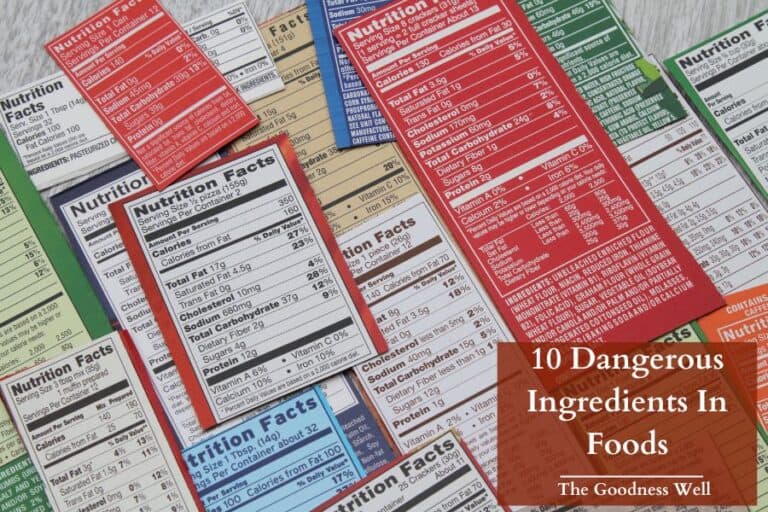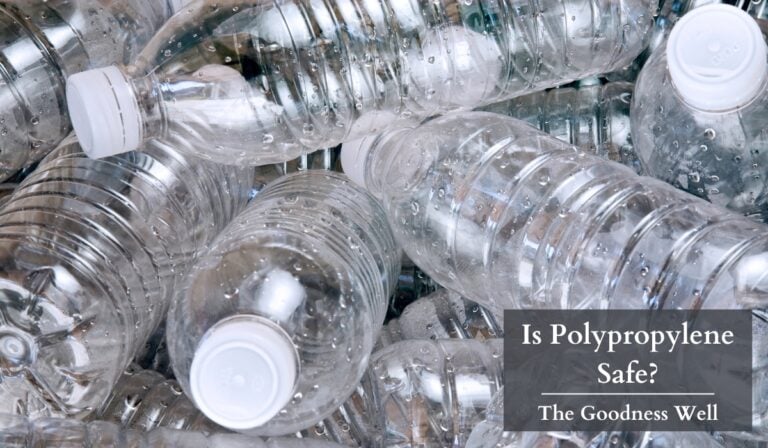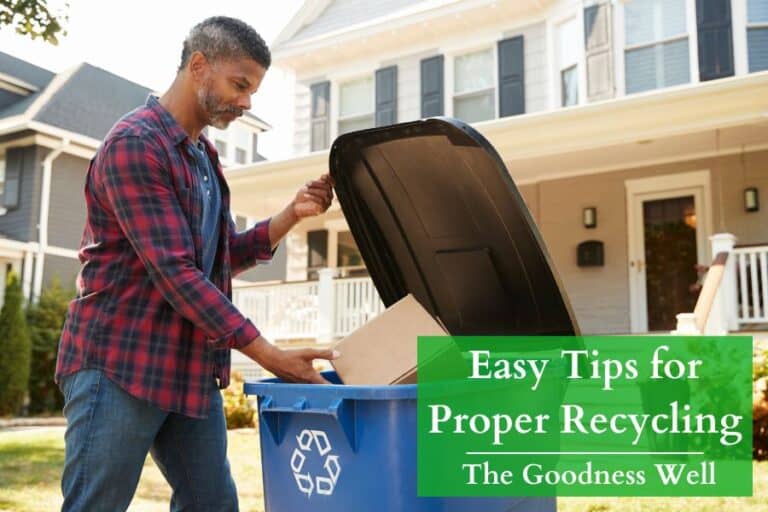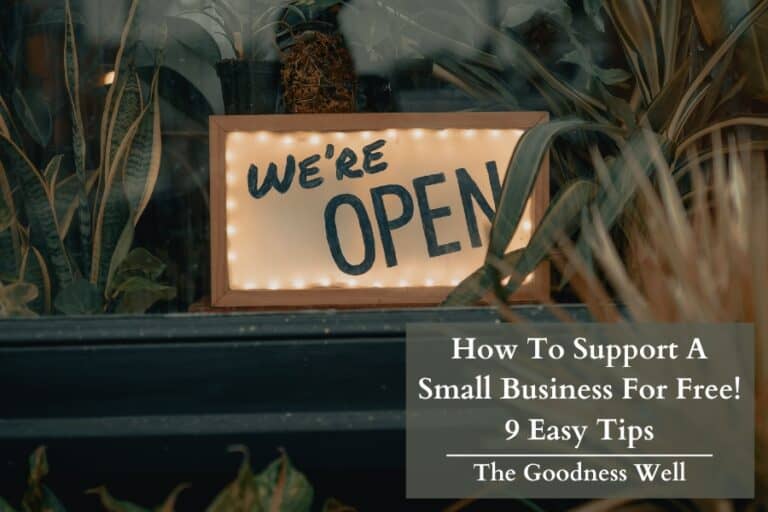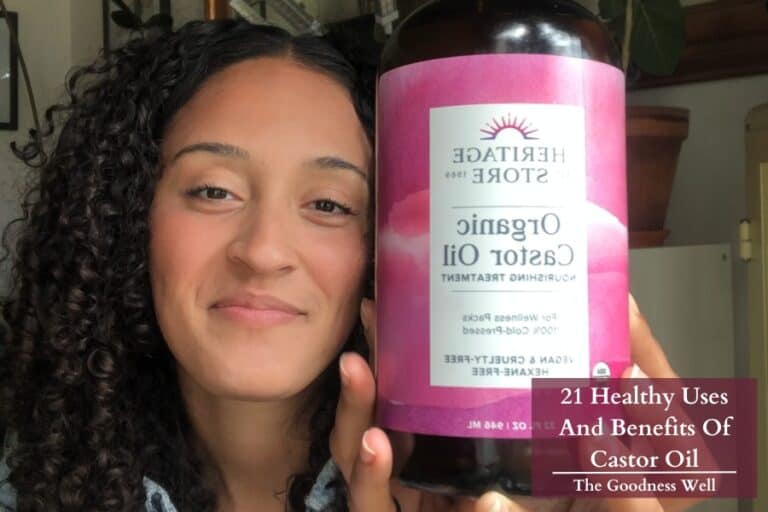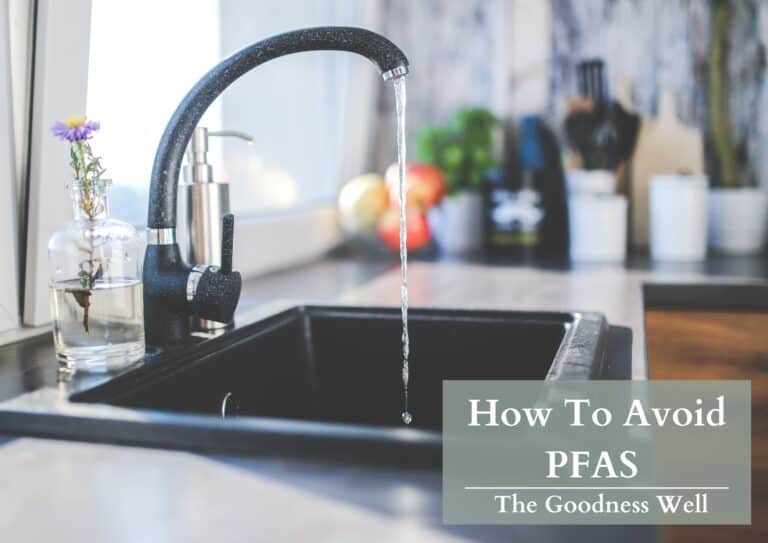5 Effective Tips to Avoid Pesticides in Your Produce
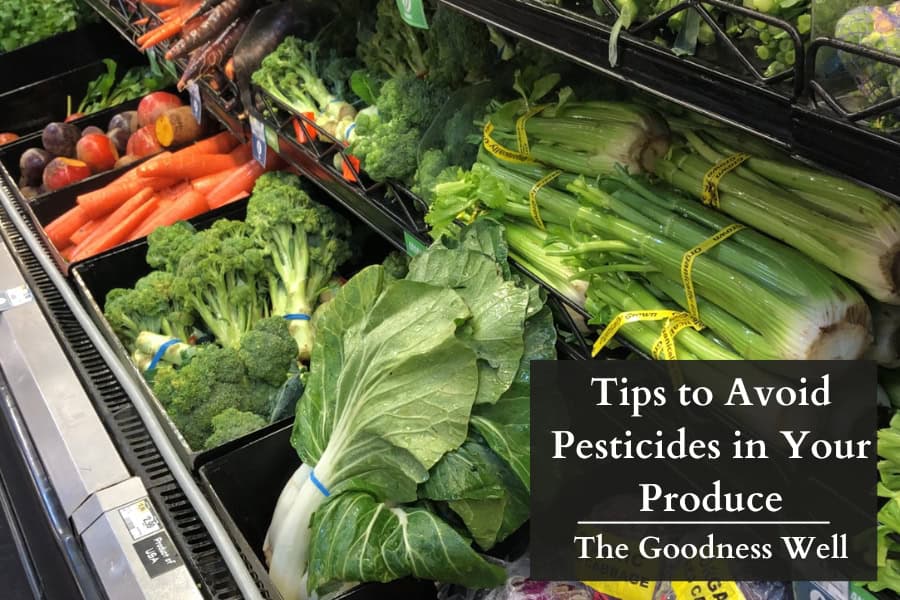
Sure, pesticides aim to keep foods “pest-free” and kill only the “bad” bugs. …But the reality is that no matter how hard we try, pesticides affect much more than the insects they’re intended for.
Not only do they wreak havoc on the natural insect population, including our pollinating friends(bees and butterflies) but they also affect animals, natural habits, and our health!
In her book Silent Spring, Racheal Carson says it best, “Can anyone believe it is possible to lay down such a barrage of poisons on the surface of the earth without making it unfit for all life? They should not be called ‘insecticides,’ but ‘biocides. “
So, how can we avoid these biocides? Follow along and learn 5 ways to avoid these toxic chemicals!
TL;DR
- Understand The Dirty Dozen & Clean Fifteen
- Effectively Removing Pesticide Residue
- Grow Your Own Produce
- Where To Get Clean Produce
- Seasonal Eating
1. Understanding the Dirty Dozen and Clean Fifteen
Ok, so the first thing you need to know is which produce has the most pesticides and the difference between organic and conventional produce.
So, first things first – the Dirty Dozen and Clean Fifteen lists. The Environmental Working Group puts these out every year, and they’re super helpful.
The Dirty Dozen is a list of fruits and veggies that tend to have the most pesticide residue.
The Clean Fifteen, on the other hand, are produce that typically have the least amount of pesticide residue.
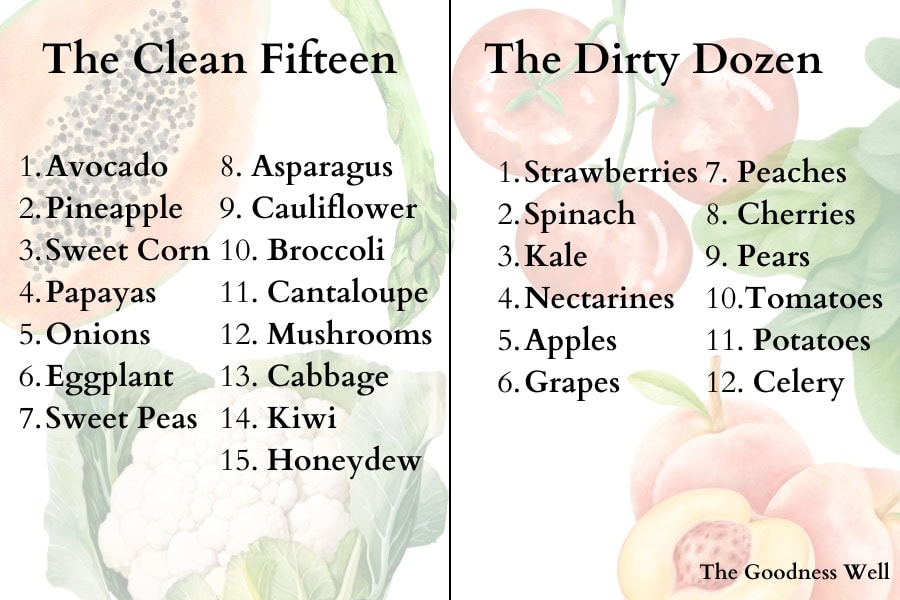
So if you’re someone like us who can’t afford to buy every single produce item organic look for the things on the clean fifteen list that have lower pesticide levels than other conventional produce.
Another trick I’ve picked up is buying frozen organic produce. It’s often cheaper than fresh, and it lasts way longer. No more guilt about that spinach going bad in the fridge!
Now, let’s talk about reading labels.
Look for the USDA Organic seal. That’s the gold standard. But there are other labels too, like “pesticide-free” or “no synthetic pesticides.” These can be good options if you can’t find or afford fully organic.
You can also look for PLU(Price Look Up) stickers that are used to identify if the produce is organic, GMO, or Organic.
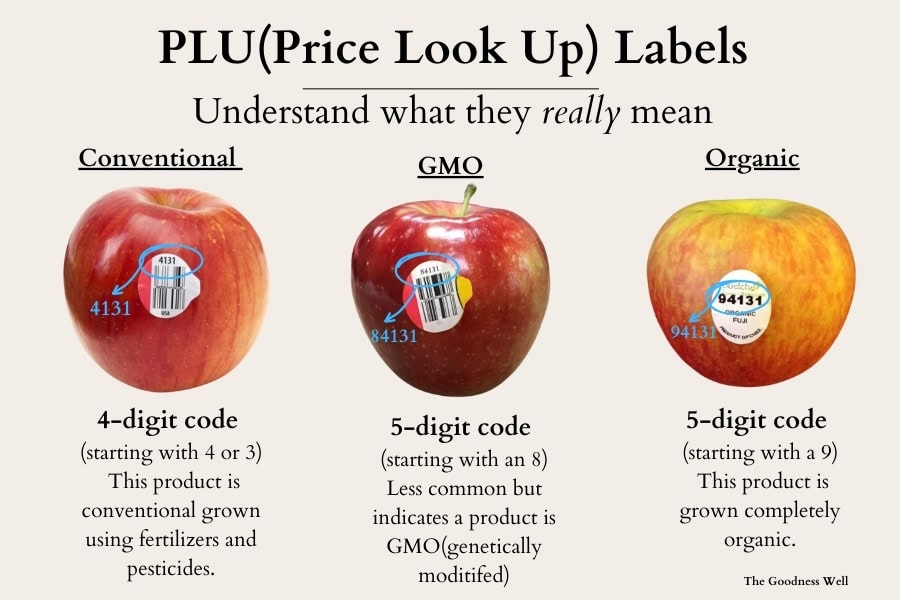
Washing your produce doesn’t get rid of all the pesticides. Some of it gets absorbed into the plant as it grows. That’s why buying organic for the Dirty Dozen is so important.
2. Effectively Removing Pesticide Residue
Okay, so let’s talk about washing our fruits and veggies. Washing your produce is important whether it’s conventional, organic, or from your backyard.
I used to think a quick rinse under the tap was enough, but really all that’s good for is surface dirt and dust.
But don’t worry—soaking your produce in a baking soda and water solution is an excellent way to clean all types of fruits and veggies. This method is scientifically proven to loosen dirt and residue, making your produce cleaner and safer to eat.
For vegetables with tough skins like potatoes or carrots, I use a veggie brush. Give them a good scrub in combination with the baking soda and water mixture.
Pro Tip: Wash produce even if you’re gonna peel it. I used to skip washing bananas or oranges, but any residue can transfer from the peel to the flesh when you cut into it.
You don’t need those fancy overpriced produce washes you see at the store. They’re not worth it and baking soda-water mixture works the best.
3. Grow Your Own Produce
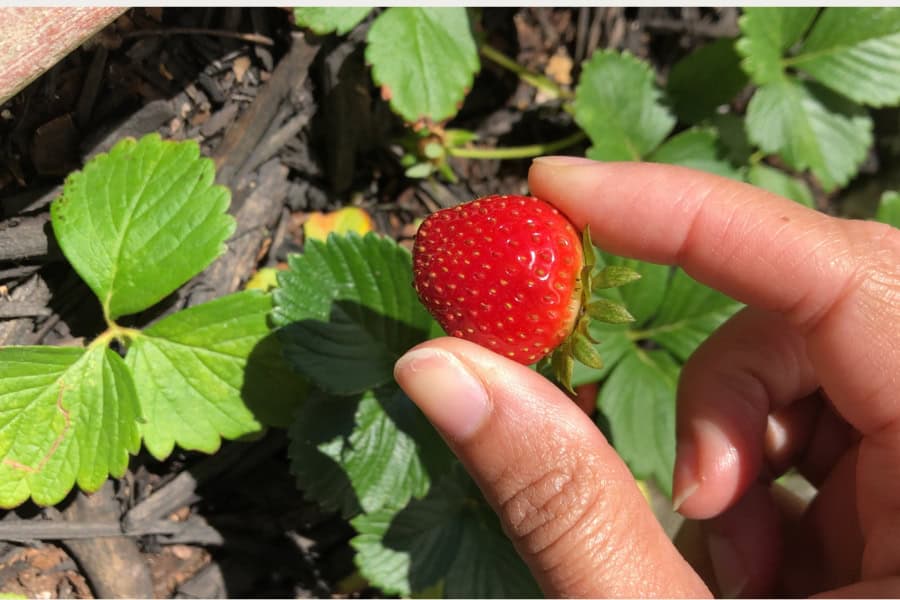
While I’m not saying you need to go out and start a whole farm and grow everything you eat.
All you need is a small space in the backyard or a gardening pot to start your home garden.
Whether you live in a mansion or an apartment you can grow herbs, fruits, and veggies that will save you money in the long run and keep you away from conventional, GMO produce and pesticides.
You’re more capable than you may think and there are so many resources that can help. There’s just something so satisfying about eating food you’ve grown yourself.
The easiest things to grow when first starting your garden, are herbs but veggies like lettuce grow fast and you can harvest it multiple times.
Produce to start growing for beginners:
- Tomatoes
- Lettuce
- Radishes
- Carrots
- Zucchini
- Cucumbers
- Green beans
- PeasBell peppers
- Spinach
Now I’m not saying growing your own food is easy and it does require patience but by doing so you can make sure you’re eating organic fruits and veggies.
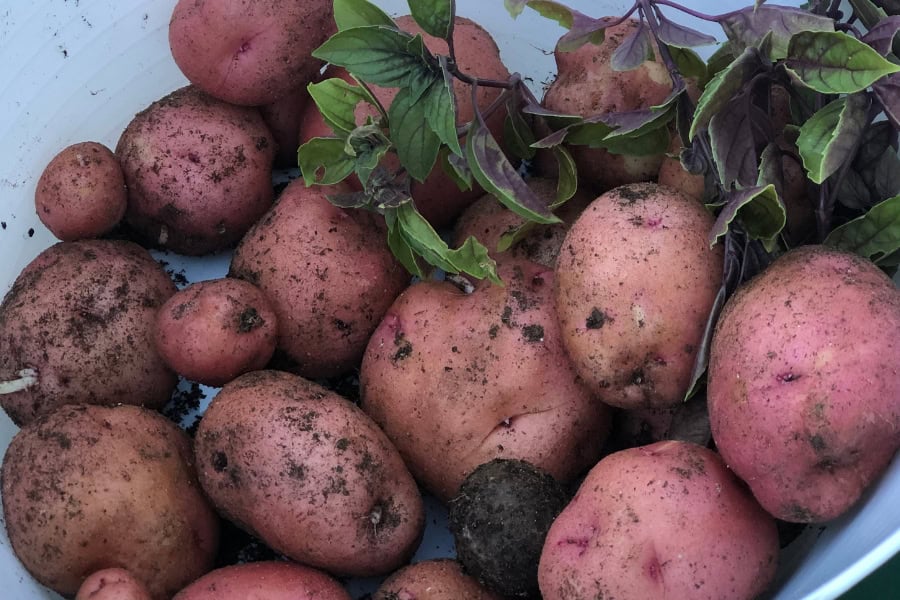
Pest control in an organic garden can be tricky. I’ve become best friends with neem oil and diatomaceous earth. They’re natural ways to keep the bugs at bay without resorting to nasty chemicals or harming our pollinating friends.
Starting a home garden has been such a learning experience. There’ve been plenty of failures along the way (RIP, my first attempt at Butternut Squash), but each season gets a little easier.
4. Where To Get Clean Produce
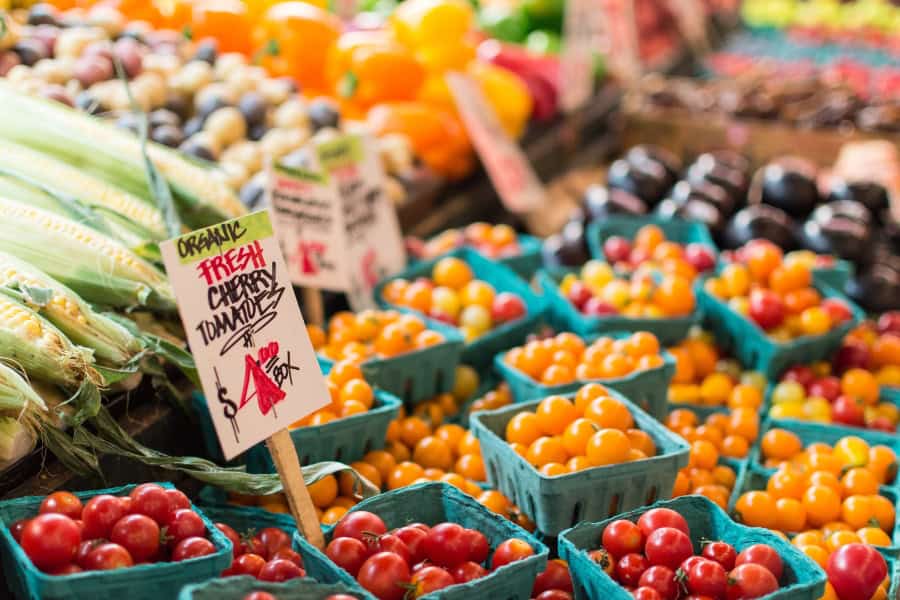
Now of course you can always head to the closest grocery store and shop in the miniature organic produce section but you also have other options.
One of my favorite ways to get fresh food is from farmer’s markets. Now of course these aren’t always open.
But their produce is always fresh, seasonally appropriate, and usually has less pesticides than you will find at large supermarkets (but always ask just to make sure).
However, Farmers’ markets can be pricier than supermarkets for some items. And you have to be prepared to adjust your meal plans based on what’s available. But for me, the quality and the experience make it worth it.
Best places to find organic produce:
- Farmers’ Markets
- Community Supported Agriculture (CSA) Programs
- Grocery Stores (e.g., Whole Foods, Sprouts)
- Local Farms and Farm StandsHealth Food Stores
- Online Organic Produce Delivery Services (e.g., Misfits Market, Farmbox Direct)
- Co-ops and Food Hubs
- Organic Sections in Major Supermarkets
- Community Gardens
5. Seasonal Eating
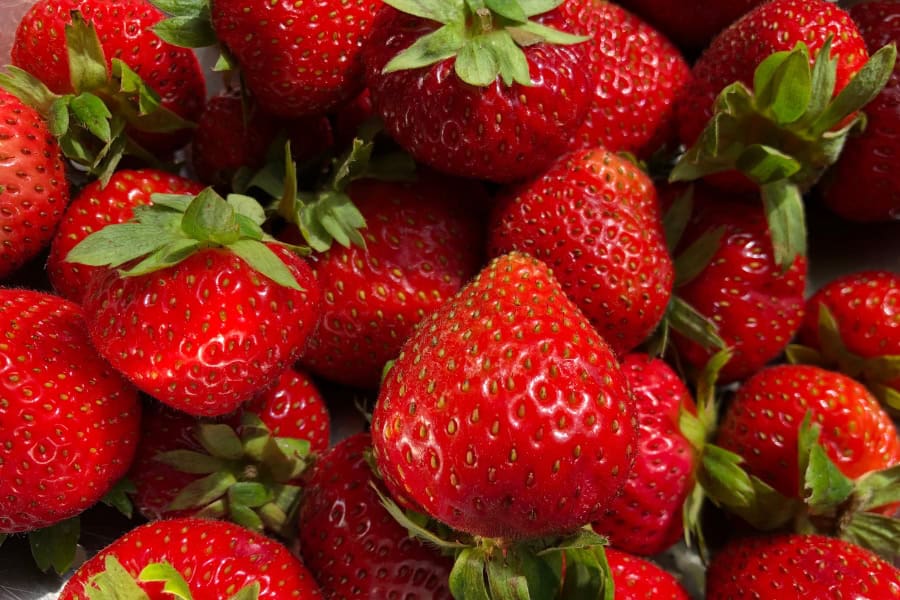
I used to buy strawberries in December without a second thought until I learned about seasonal eating.
Much of the produce we consume year-round isn’t naturally grown during all seasons.
Now of course in greenhouses and special facilities, there are some that can thrive through every season…even organically.
…But buying an organic fruit or vegetable out of season can be a bit more expensive than when they’re in season.
Not only that, produce grown out of season can sometimes taste less ripe and not as full of flavor compared to a seasonal plant grown in its natural season and environment.
Seasonal produce is fresher and contains more of its natural nutrients.
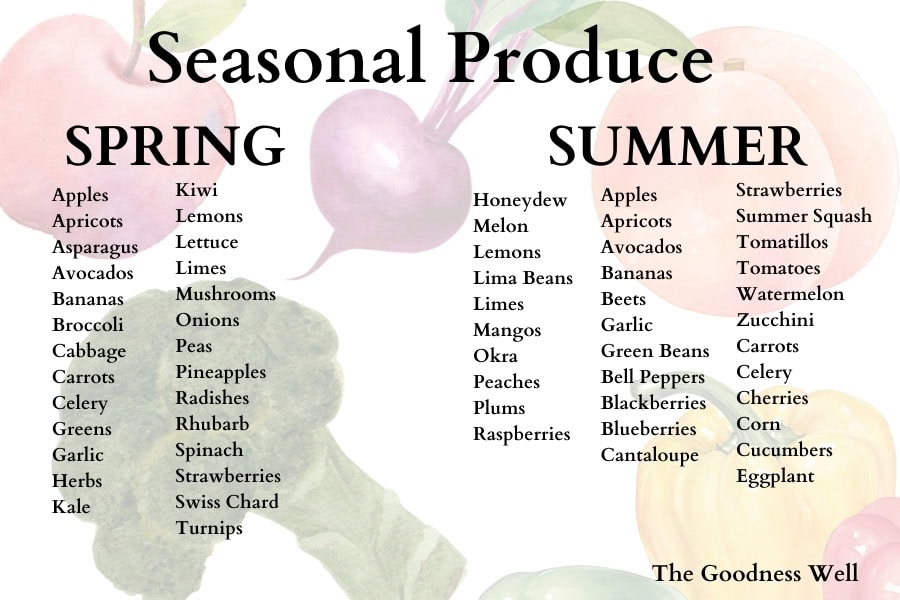
Not to mention, a lot of times pesticides are used to preserve a fruit when it’s out of season. So buying fruit out of season can cause you to get produce that doesn’t taste that great and is treated with harmful chemicals…
You can use the USDA’s website to get a full list of what produce grows naturally in different seasons.
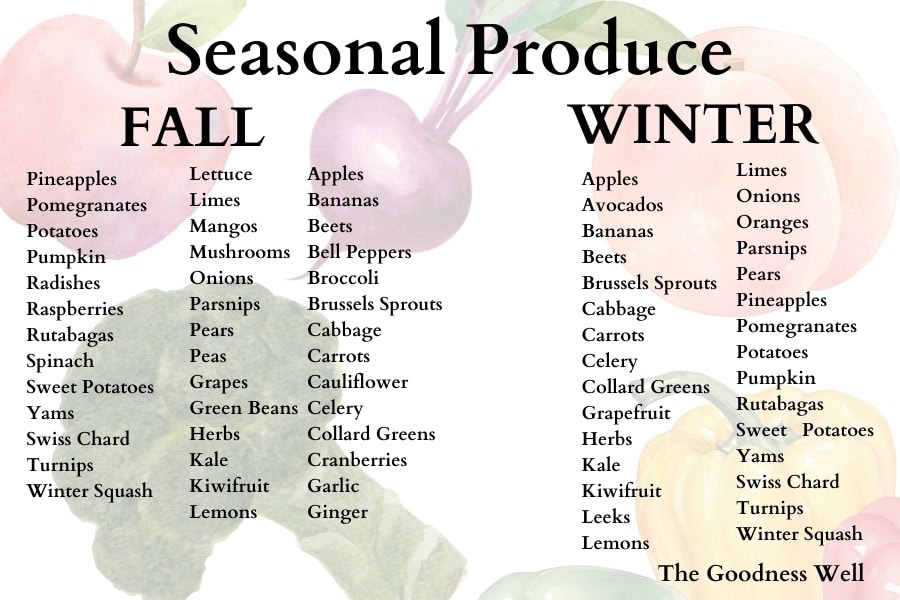
Believe it or not, there was a time when fruit was just fruit and vegetables were just vegetables. But with the increase in pesticide use or GMO products, we’ve had to classify our produce in order to know if it’s safe or chemically treated.
It’s a shame but it’s the reality.
We hope these tips were helpful and that you use them to make sure that you’re getting organic and pesticide-free produce because that’s exactly what we all deserve.
As always thank you for reading!! If you have any tips or questions leave a comment down below!🥬

